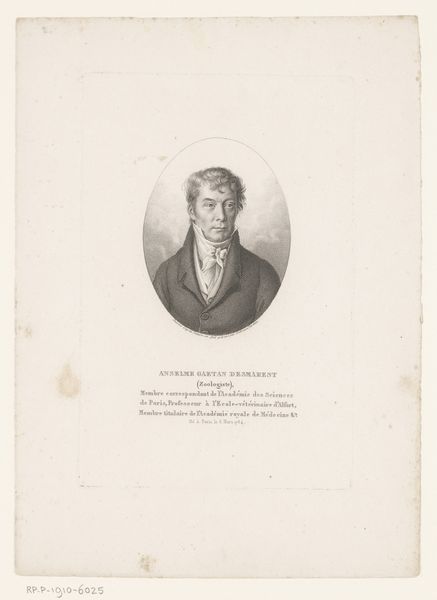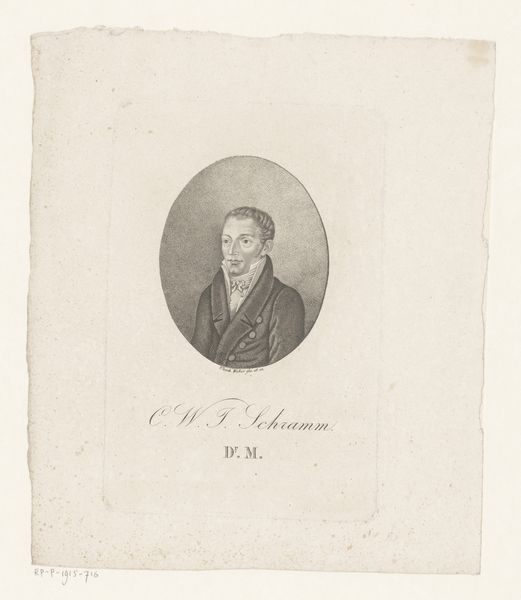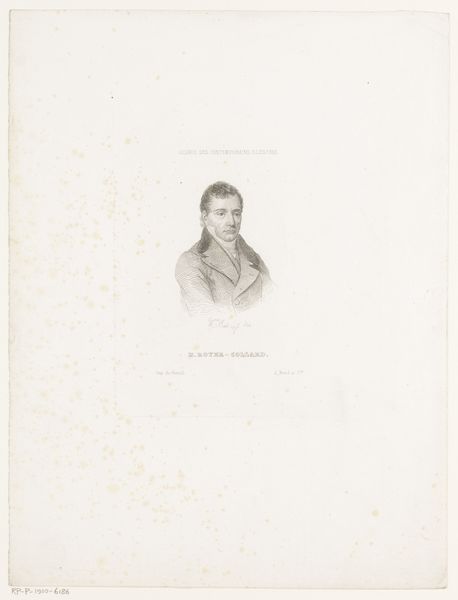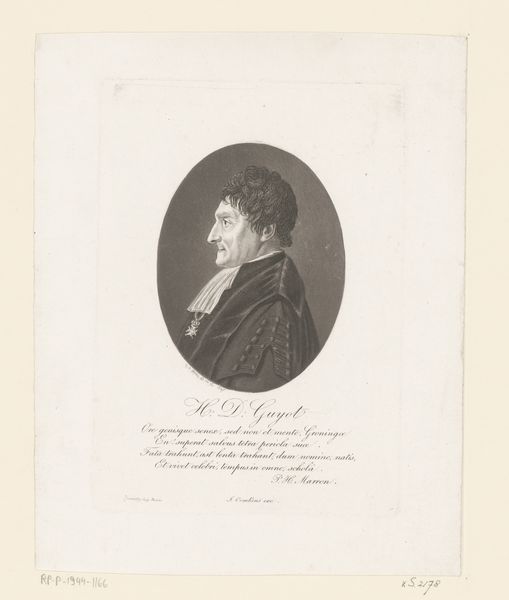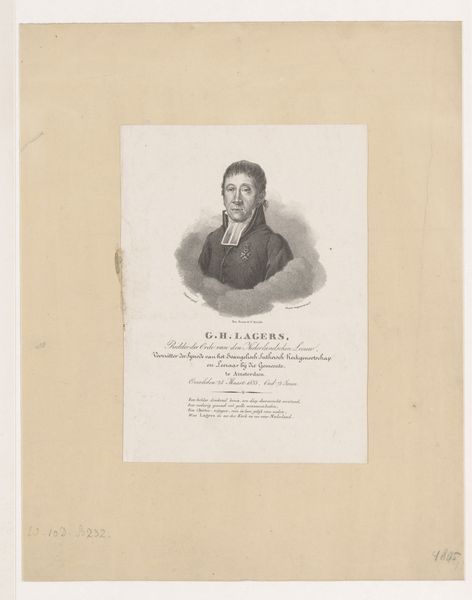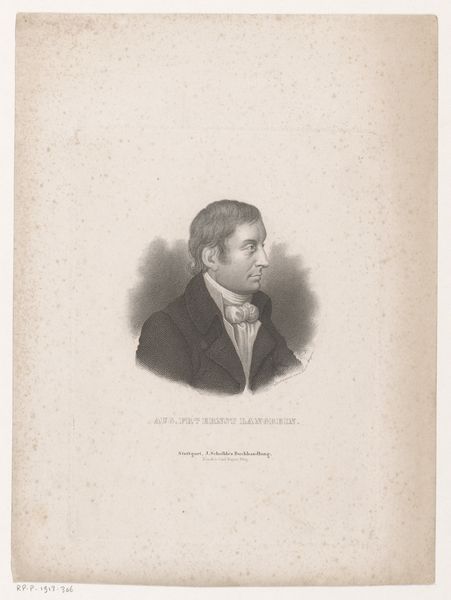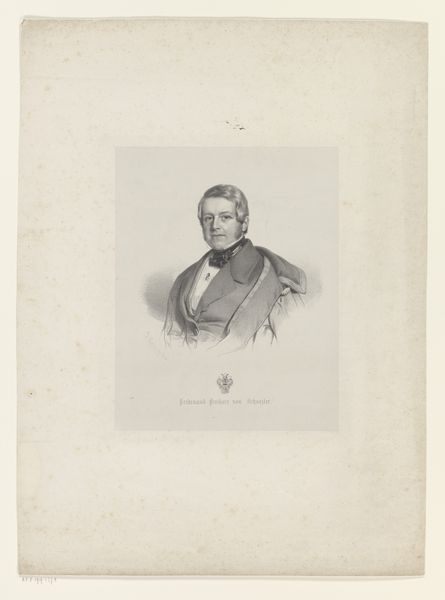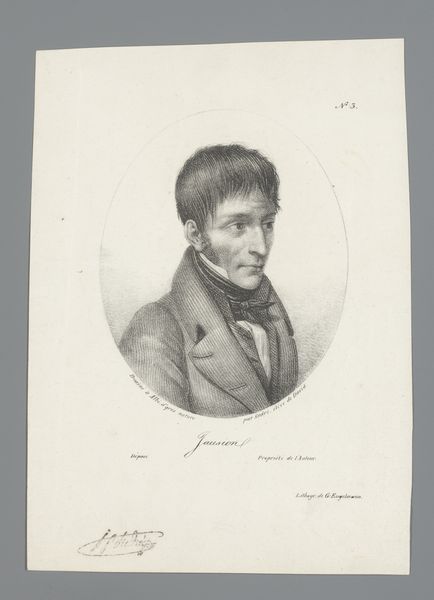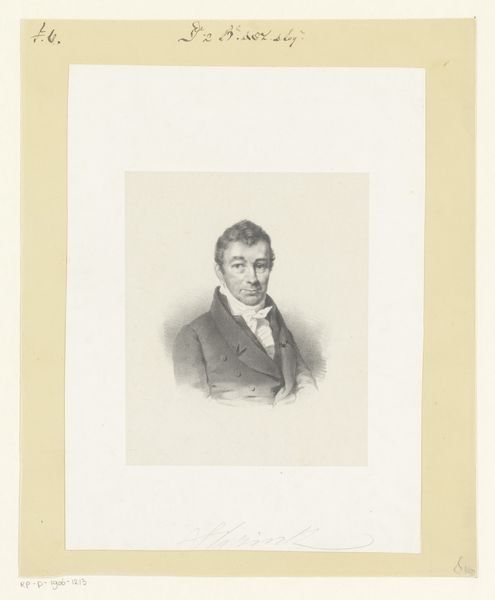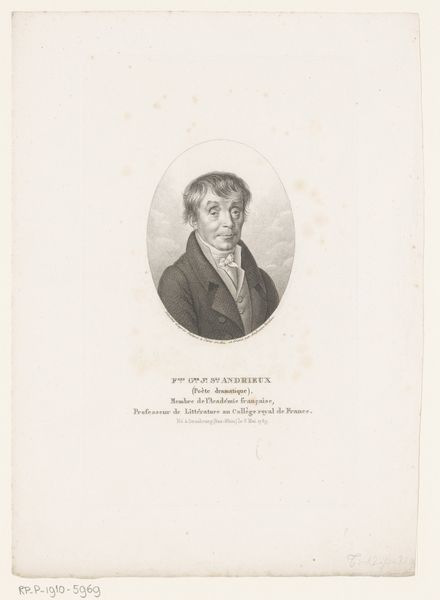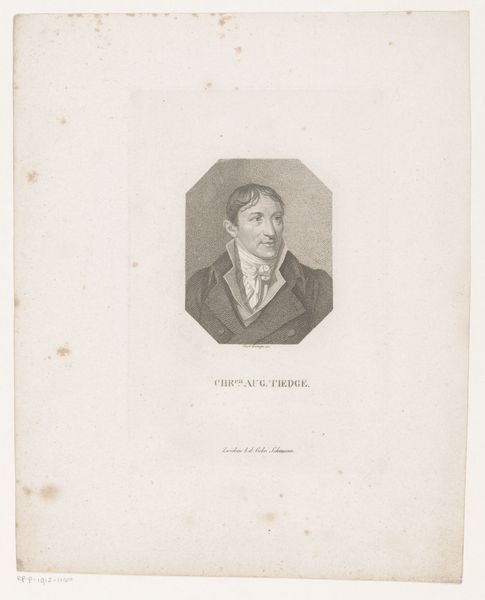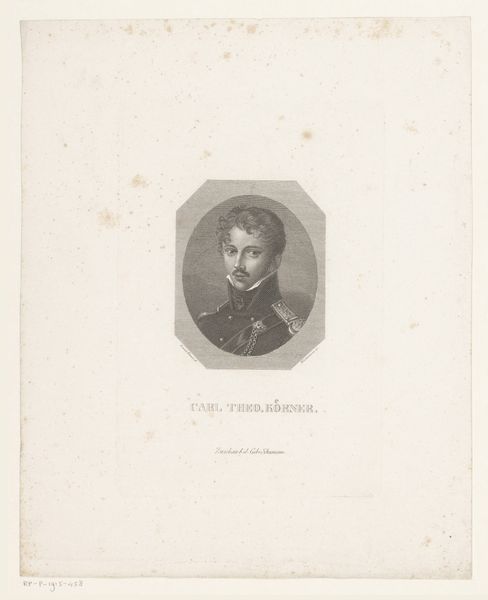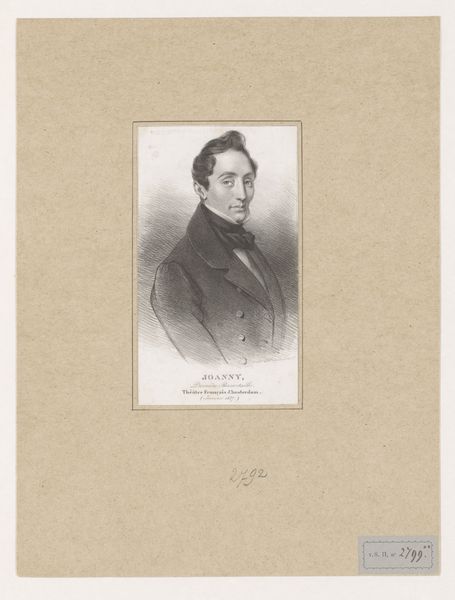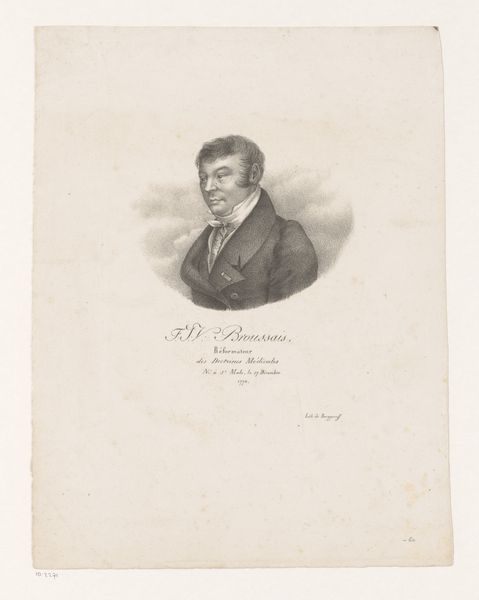
Dimensions: height 148 mm, width 105 mm
Copyright: Rijks Museum: Open Domain
Curator: Welcome. We're standing before Adolphe Varin's "Portret van NoëJ Joseph Hilarion de Villenfagne d'Ingihoul," an engraving from approximately 1879-1884. Editor: My initial impression is one of faded formality. The tight hatching of the engraving creates a somber and reserved mood, even with the baron’s slightly disheveled hair. Curator: It's interesting you note the formality. Consider that this work belongs to a larger tradition of portraiture aimed at memorializing and legitimizing social standing. Varin likely sought to present the baron according to the aesthetic expectations of his time, reflecting a societal desire for order. Editor: I see that, but there's also something intimate in the way the lines trace the folds of his clothing and the character in his face. The formal constraints paradoxically amplify small details, creating depth in an otherwise restrained composition. Curator: Absolutely. Engravings such as these also served an important public function. Circulated as prints, images of notable figures would reinforce systems of power, disseminating not just an image of an individual, but also promoting shared cultural values through these depictions. Editor: Looking closer, the formal qualities mirror this dissemination, don't they? The crisp, uniform lines allow for easy reproduction, facilitating its broad circulation while also presenting the Baron's likeness in an accessible style. Curator: Exactly. The portrait's formal qualities are entirely tied to its function within a visual and political landscape, designed for wide consumption within particular class boundaries. The piece becomes more than just a face. Editor: And beyond these political concerns, there's the tactile pleasure of the line itself – the way it defines form, creates light, and gives texture to the fabric and the Baron’s face, qualities you can appreciate separately from its historical context. Curator: Indeed. Considering its dual role--public image and private depiction--we gain richer appreciation. It’s where formal artistry meets the cultural currency of representation. Editor: Agreed. It's a potent reminder that aesthetic appreciation can deepen through historical context, just as history comes alive through the artwork's composition.
Comments
No comments
Be the first to comment and join the conversation on the ultimate creative platform.
